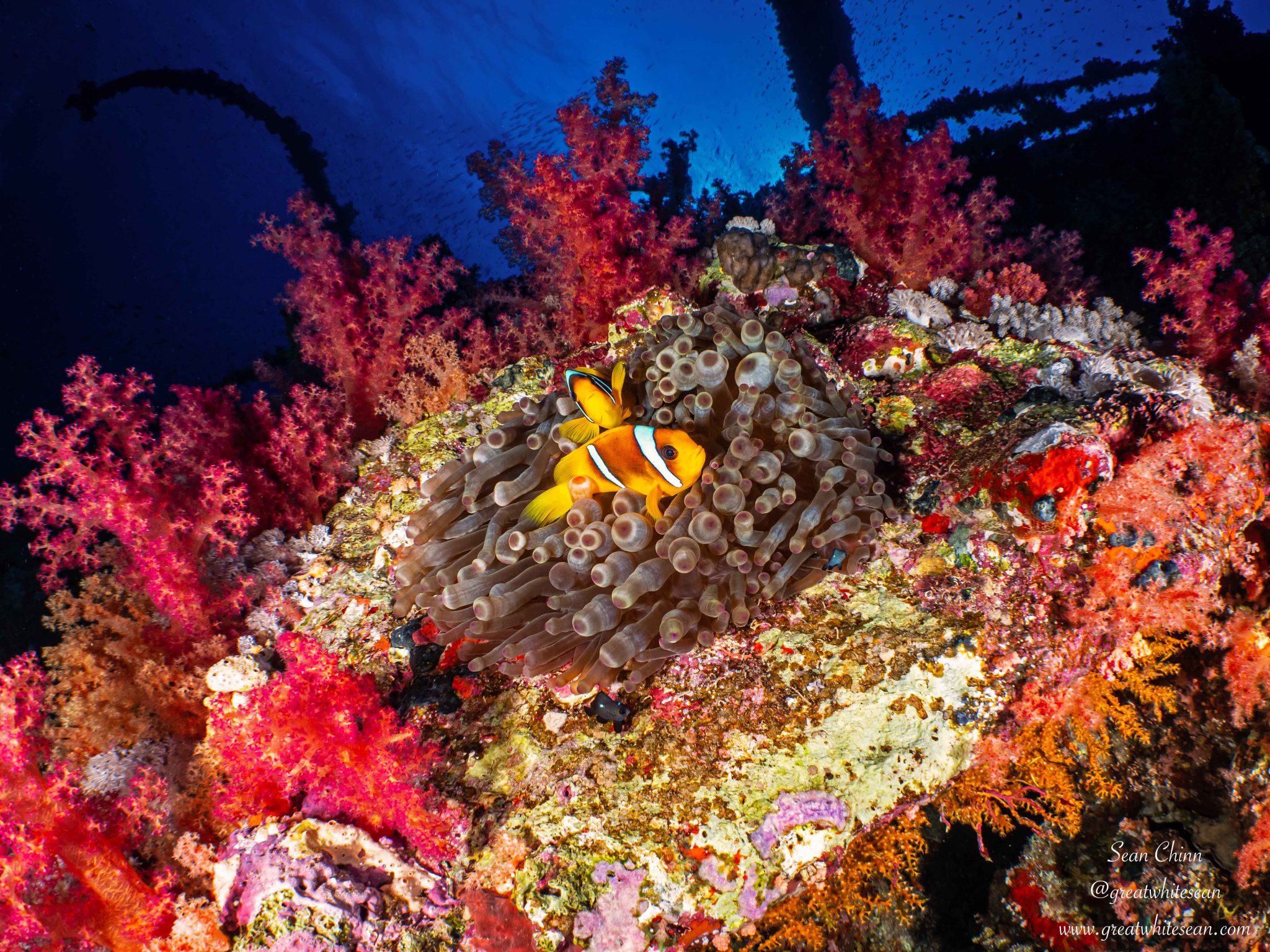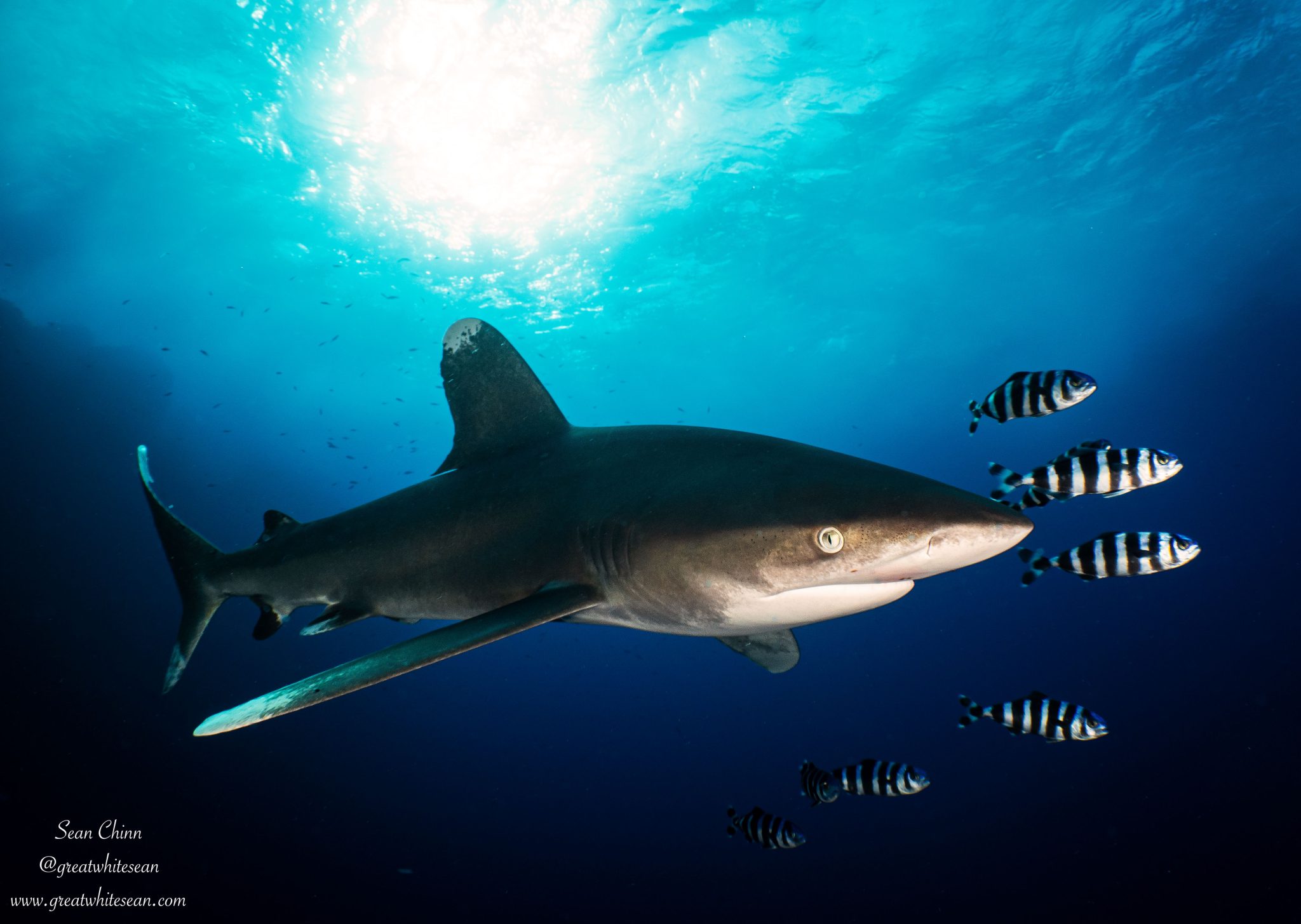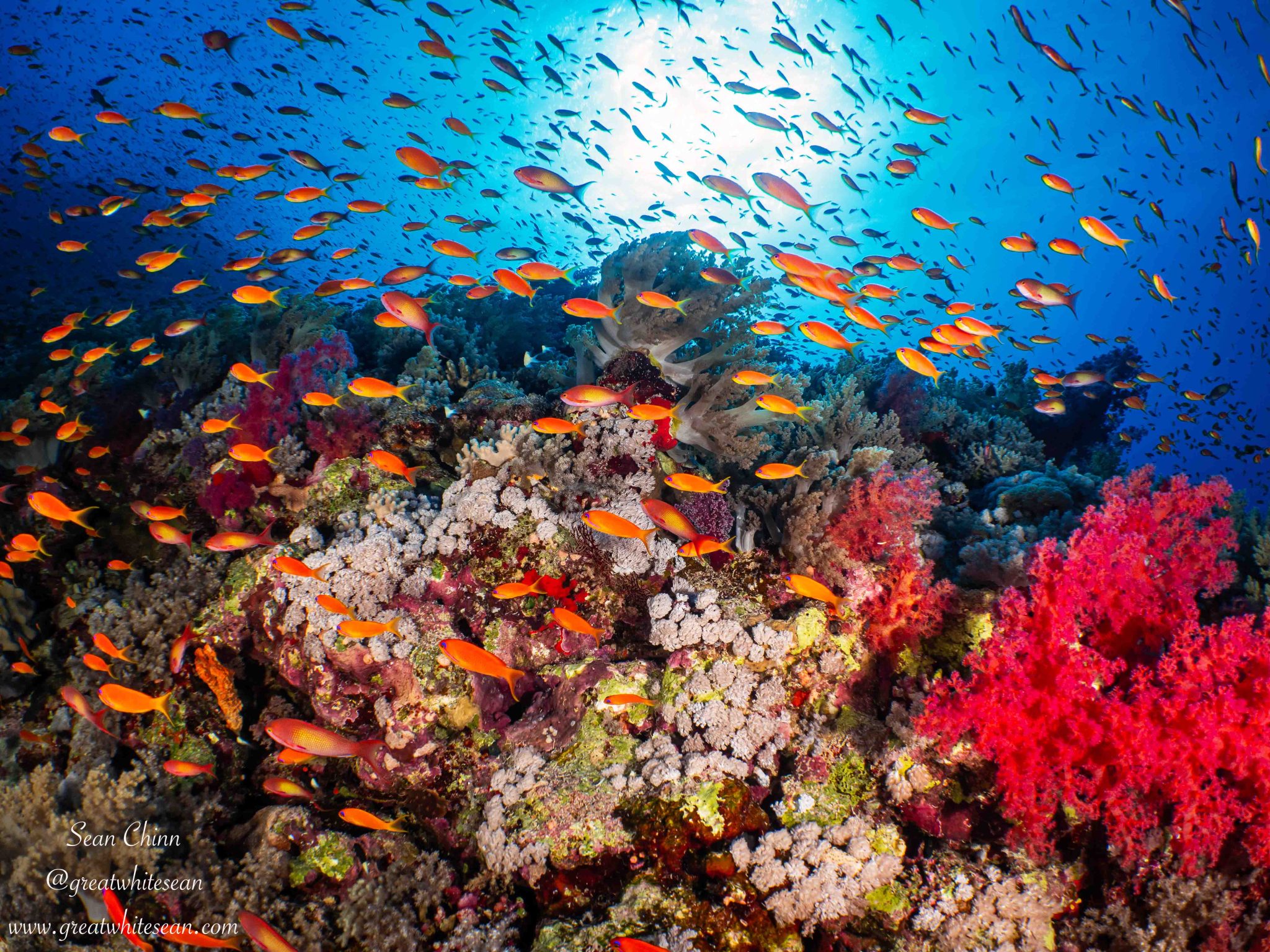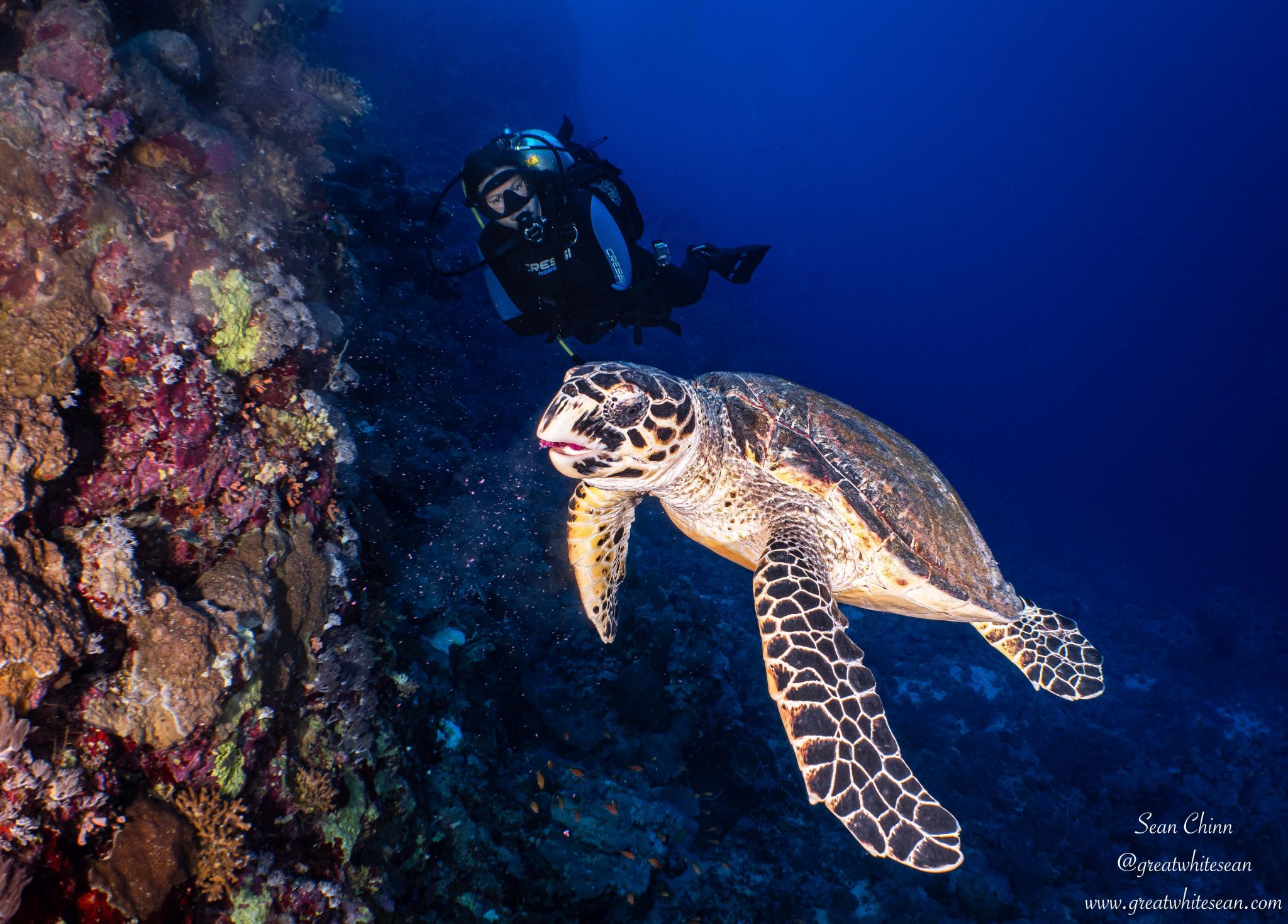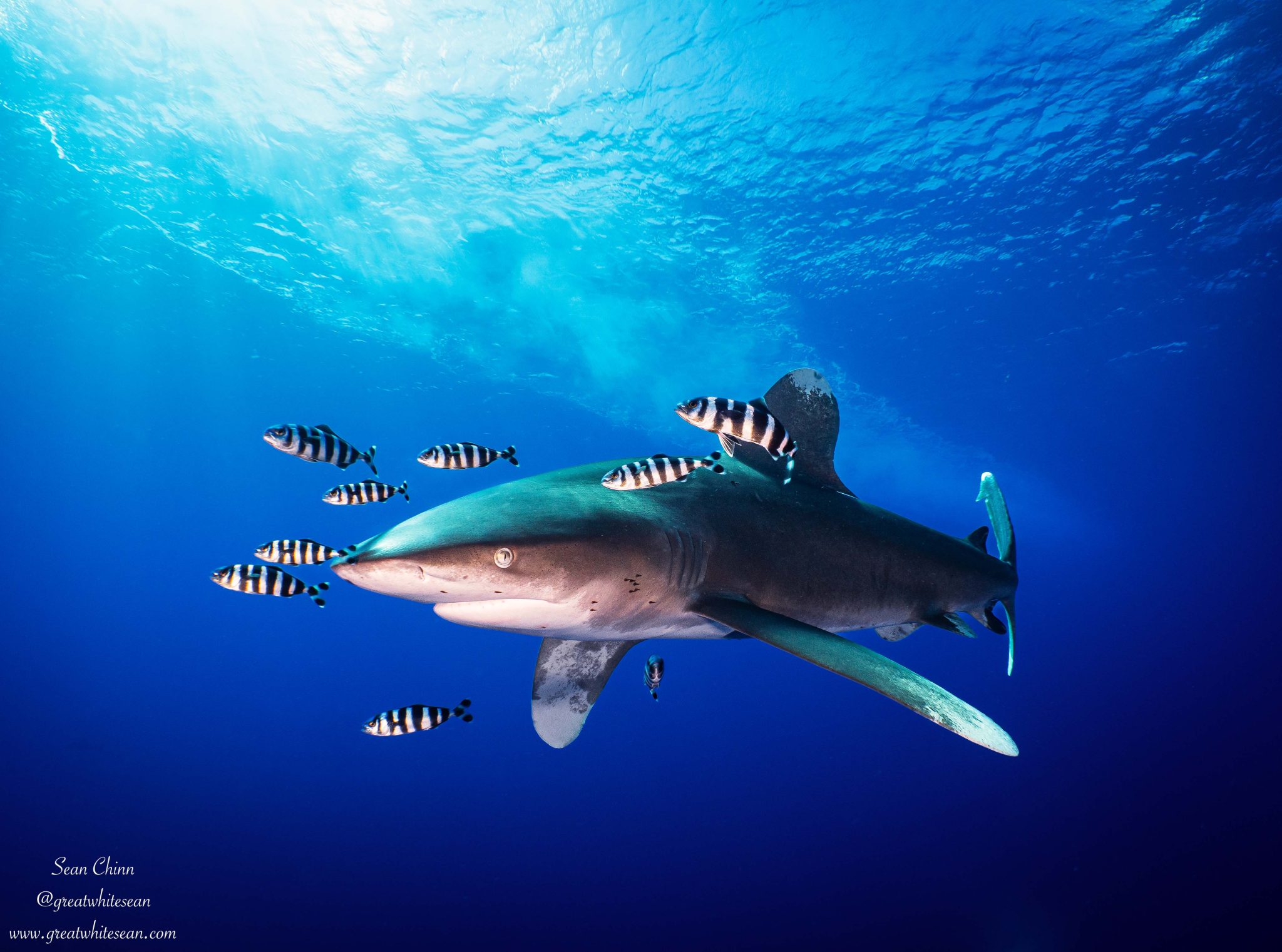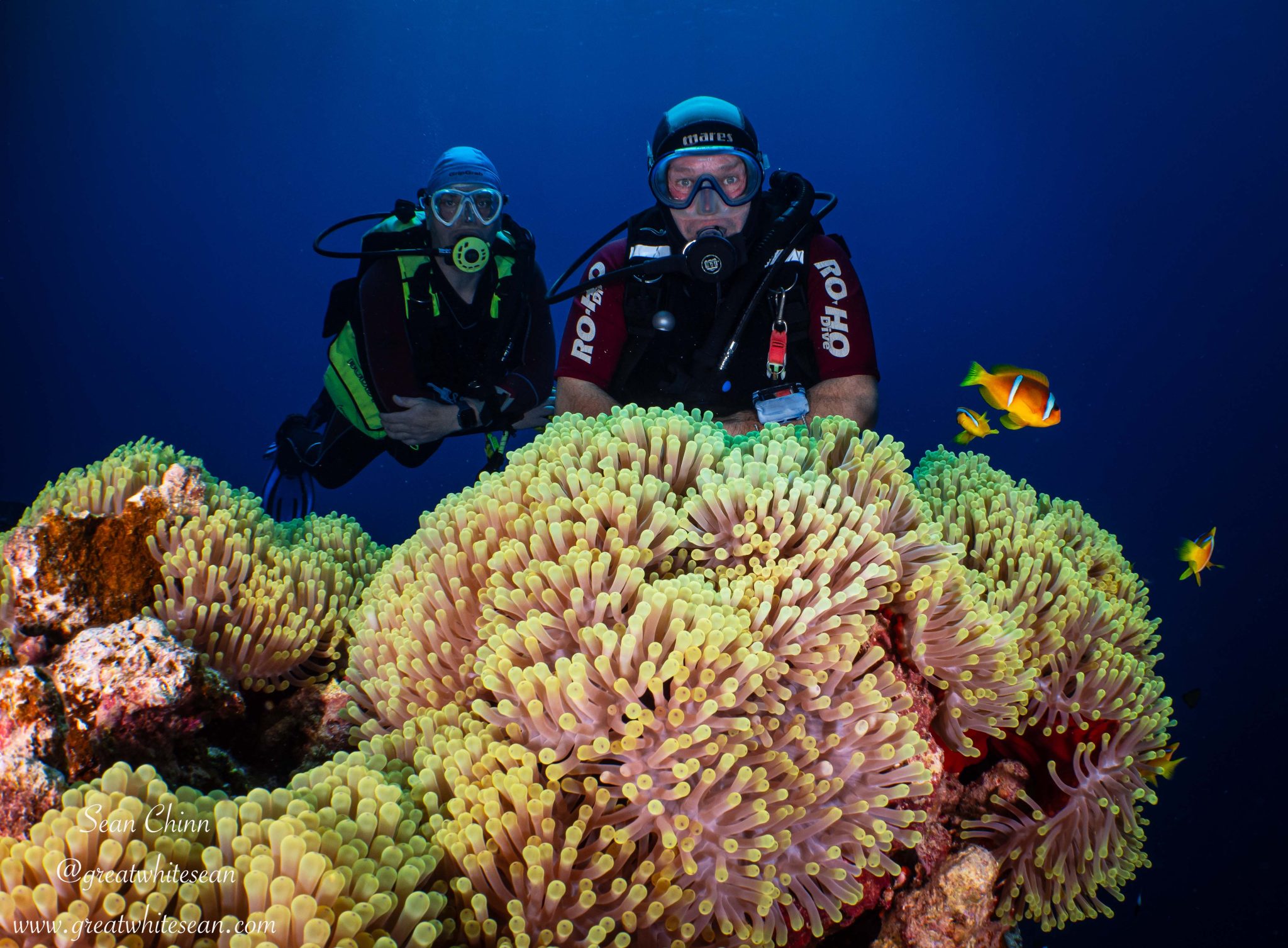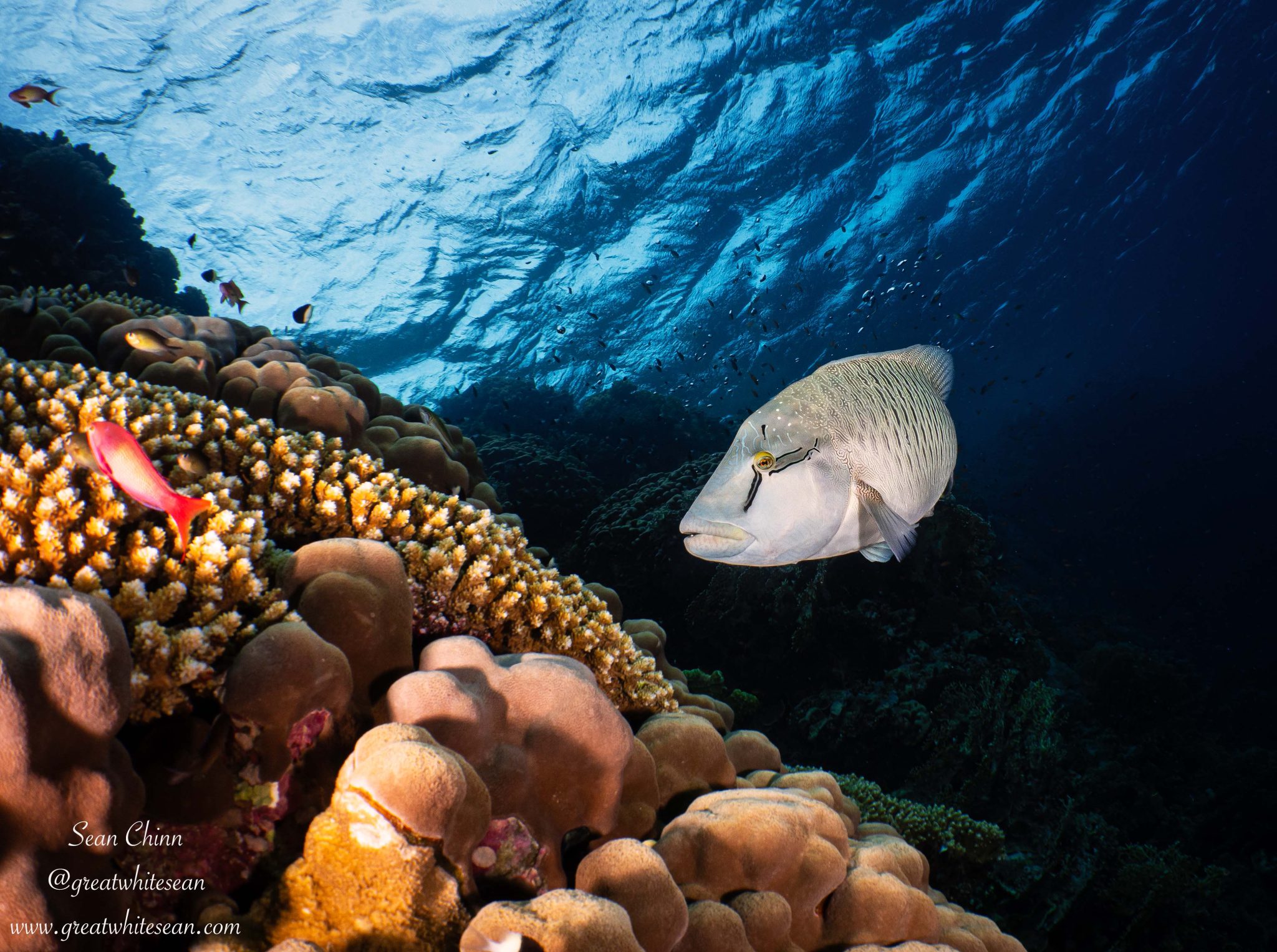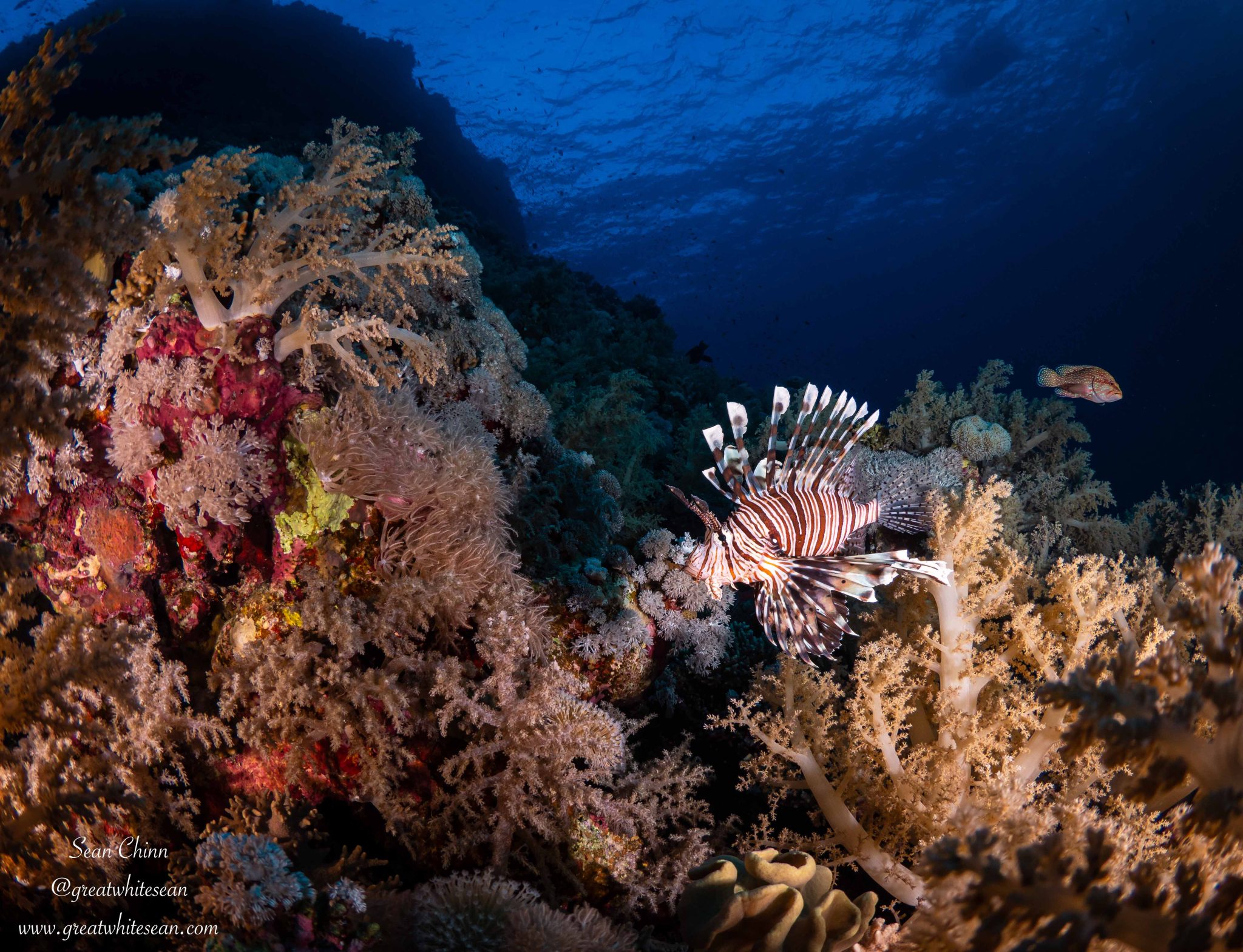Blogs
‘Simply the Best’ – a shark lover’s dream!!!
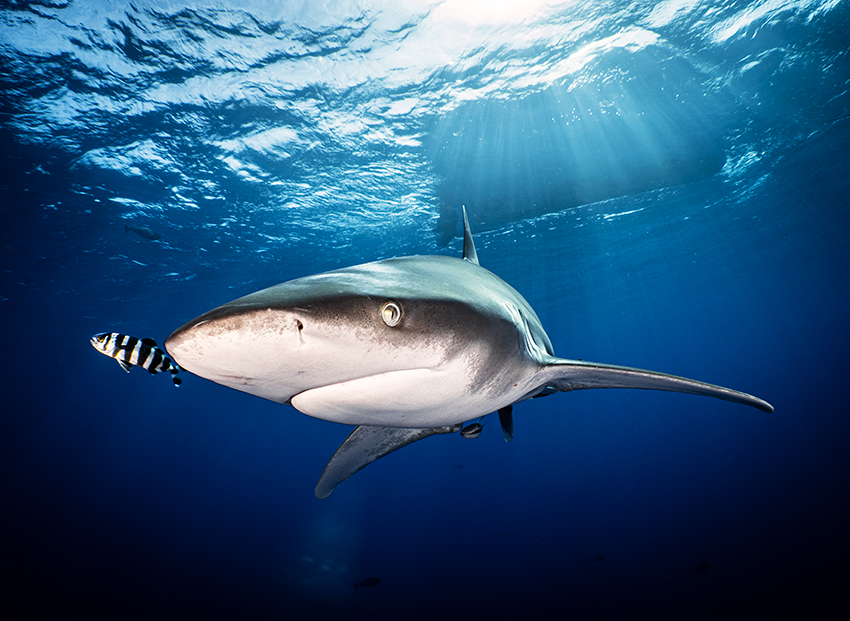
After joining Scuba Travel for a “Simply the Best” itinerary in the Red Sea, I’ve been debating how to break down my blogs and how to deliver them. Then I thought, why not deliver them as the name suggests? A “Simply the Best” itinerary showcases the best of the offshore reefs (Daedalus, Brothers and Elphinstone) and the intensity they bring, coupled with the more relaxing quintessential sandy bottom, coral pinnacles and stunning reefs the Red Sea is famous for. On that note, I want to take you on a journey first with the stunning offshore reefs and the adventure they brought – specifically, the shark madness that ensued – before finishing with a more relaxing journey through the coral reefs along the coast.
I’m a shark lover, there’s no doubt about that. I’ve been fortunate to knowingly share the water with 24 different species of shark. It took me a while to finally see oceanic whitetip sharks in the water, but I finally got my chance on a trip 2 years ago. They instantly became one of my favourite sharks and I was definitely longing for longimanus once more. So when this trip materialised only 10 days before I was due to go, I was over the moon, especially when I saw reports of 13 different oceanics being seen the week before my trip. I was super excited and after a couple of relaxing reef dives on the Sunday, it wasn’t long before we were making our way to Brothers Islands to start our offshore adventure on the Monday.
Our first port of call was Big Brother island and diving the wreck of The Numidia, a British cargo ship that sank in 1901, on the Northern tip of the island. I first dived this wreck back in 2014 and then again in 2021. This was my third time diving the wreck and always enjoy it when I do. It’s so full of colour and life, with beautiful soft coral covering nearly every inch of it which you can see at recreational level. The wreck drops down to 90m, so someone else would have to advise me on that. I always make a habit of photographing a particular anemone with Red Sea clownfish and see the difference year by year. I’ve noticed a lot of new healthy soft coral growth around it this year, which was amazing to compare.
While the Numidia is great fun to dive, the best was yet to come. Our plan was to be dropped off at the Numidia by zodiac (Tranquility has 2 large, sturdy ribs, with a ladder for getting back on with ease). We would then make our way from North to South along the West wall, marvelling at all the life, as the anthias danced a merry dance, before surfacing at Tranquility. While nearing the end of the dive, as we drifted along the reef wall, Reda got super excited pointing up into the blue. YES!!!! Pressure off on only our first dive on the offshore reefs – our first oceanic whitetip shark and it made a beeline straight for us. Luckily I was a little shallower than some of the other divers and more into the blue. It came straight for me and I managed to get some really nice shots, while also buzzing with excitement. It made its way through the group, greeting each one of us, before carrying on down the reef towards the North and the second group following on from us. What a start!!
Sadly, the next 2 dives at Brothers didn’t hit the heights of the first. We enjoyed seeing the beautiful colours on the South Plateau at Big Brother and did have a friendly Napoleon wrasse for company for a brief moment. However, one of my dive buddies who was on air got some close up photos at around 42m. BUT…. I was on 29% Nitrox – which by the way, is included with your Scuba Travel booking – so I shallowed up a little when I realised the wrasse was too deep for me this time. Our afternoon dive was at Little Brother, which was the site of my first ever oceanic sighting underwater 2 years previously. After seeing the oceanic at Big Brother and hearing about sightings from the crew mooring up, I had big hopes for more oceanic encounters here. We started the dive on the North Plateau, a slanting plateau that extends the island underwater and slopes to 40m before dropping off. This is normally a great place for threshers, but no luck this time. However, the dancing anthias and array of hard and soft coral make this a truly beautiful place to dive, so full of colour. After some time on the plateau, we shallowed up and followed the stunning reef wall on the west side leading to the south where Tranquility was moored. Unfortunately there were no oceanics under the boat this time, but Daedalus was where we were headed for the next 2 days and prime longimanus territory.
The wind wasn’t letting up and the waves still made for an adventurous time. We got to Daedalus though and that’s all that mattered to me. Unfortunately, we weren’t the only ones either. After waking up and looking outside, I counted roughly about 16 boats moored up (some may have been hidden). This is one of the main reasons that Scuba Travel usually travel Monday to Monday for their itineraries. Guests onboard, who came in September as well, eluded to the fact they were the only boat at Daedalus then because of the Monday start to the trip avoiding others. Unfortunately, come November, the flight dates change from the UK to Hurghada and they are forced to do the more common Saturday to Saturday trips. A lot of the boats were due to leave at the end of that day though and we had another day to go.
Our first dive was to the North of the island and it was an adventure to get to on the Zodiac. Those adrenalin fuelled zodiac rides over waves always make me feel like I’m on a special mission. We were hoping to catch a glimpse of some scalloped hammerheads, as the North is the best place for them. It isn’t hammerhead season though and I wasn’t expecting too much for that reason. Unfortunately, we didn’t see any hammerheads and it was quite a challenging dive, spending most the time fighting current just looking at blue water. Not a dive to write home about but we did see our first glimpse of a Daedalus oceanic on the safety stop. A sure sign of things to come and boy did it get better.
Dive two went a little like a progressive rock song. Think ‘Stairway to Heaven’ or ‘Bohemian Rhapsody’, taking you on a peaceful journey before blowing the hair off your head. We initially dropped in at ‘Anemone City’, which is exactly what the name suggests – an area from around 5 metres down to 15 metres covered in anemone coral and full of Red Sea clownfish. I was at peace watching the anemone sway in the gentle current and swell, while the clownfish danced in and out. Before we slowly drifted along the west wall, a hawksbill turtle slowly passed by, adding to the chilled adventure. I was itching to get under the boats though, the hotspot for oceanic activity. There was quite a current pushing you off from the reef at the South Plateau. It was slow at first as we hit the boats, with a couple of distant sightings of longimanus. Then, all hell broke loose; we were soon surrounded by at least 4 super curious sharks.
Reda quickly put his SMB up as we drifted away from the main boat in the current. I felt safe knowing the zodiacs were right above us the whole time and following us. The safety stop was spent with my head on a swivel, while making sure I captured this amazing spectacle. Shark after shark would boldly approach and bump into my camera, before moving on to other divers and giving them a thrill. I even had to shout and quickly push myself towards one that got a little too close to my dive buddy. He was preoccupied looking the other way towards another shark and the shark snuck up behind him. This is the reason you all stick together for some longimanus fun – it really was INTENSE!!!
Everyone got back on the zodiac beaming with excitement and giggling with joy. You could literally see the adrenalin pumping through our bodies. WHAT A DIVE!!!! We’d even drifted about 500m from the boat out to sea, so many thanks to the zodiac crew for following us and keeping us safe.
Dive 3 took us back to a relaxing place and was a lot more chilled around the South Plateau. We entered the water straight off the main boat. There was a single close pass by one oceanic at the start but nothing more than that. I got to see the friendly Napoleon wrasse that calls the South Plateau home, but he stayed a little more distant from me than others during their dives. Something about big male Napoleon wrasse and me, they never seem to come close.
I was so glad we had another day at Daedalus and as expected, most the boats left during the night and there was only 5 of us left. The day went pretty much exactly like the first, although the dive on the North side was less about looking in the blue and more time on the reef. We were rewarded with some giant morays and a super friendly hawksbill turtle that was happily feeding away on the coral, not caring one bit for the number of divers that greeted it. Before dive 2 followed the same plan as the day before, BUT was even more INTENSE! This time the group got split up into smaller groups and there was only me, Julia and dive guide Reda together. This time we had 5 sharks in view at one time (Reda thinks 6 different sharks though). It was crazy; we were being approached from all directions and they didn’t really want to let us out either. As we approached the zodiac, they would swim above us between the zodiac. It was mental, and once again the adrenalin was pumping. I LOVED IT!!!!!
The third dive followed the same plan, but we stayed closer to the reef towards the South Plateau, before moving out under the boats. This was beneficial, as I managed to get a couple of fairly close shots of a juvenile Napoleon wrasse for once. My goal though was to get some oceanic shots against the dappled light of golden hour. With the early winter sunset, this afternoon dive would work. Annoyingly though, I ran into camera trouble while trying to photograph a barracuda. After zooming in on my lens, it locked when trying to zoom back out and subsequently broke and rendered the camera unusable in the housing. The current was still ripping under the boat, but I managed to get back to the ladder to surface, and rather annoyingly with an oceanic right next to the ladder that I could not photograph. Hey Ho. One of those things and I’m sure I’ll return again one day.
The offshore reefs finished a little closer to land with one of the Red Sea’s most famous sites – Elphinstone. Close enough for day boats to visit, we decided to only do the one dive here, as it started to get quite busy and the weather still wasn’t calming down. The South Plateau is such a stunning site though and the coral around Elphinstone is breathtaking. The highlight was another super friendly Hawksbill feeding away at around 20-25 metres, completely carefree to the queue of divers that approached for a closer look or photos/video, happily munching away, causing a mess of coral in the water. The dive was early enough for the dappled light of morning and I was hoping for one more opportunity with longimanus. I waited as long as I could under the boat, but only got a brief view of a distant pass from one. A couple of jellyfish tried their best to keep me entertained in the blue but my time with the oceanics was up for now. I’ll see you soon!!
My time visiting the famous offshore reefs of the Red Sea had come to an end. The experience was everything I had hoped for and more. My goal was lots of oceanic whitetip adventures and it exceeded my expectations. It was time to return to the more relaxing reefs, sandy bottoms and coral pinnacles that are quintessential Red Sea diving. Stay tuned for my next instalment on how ‘Simply the Best’ continued to live up to the name…
For more information about diving in the Red Sea:
+44 (0)1483 411590
Blogs
Alonissos: The complete diving destination (Part 1)

In June we were incredibly fortunate to be invited to dive in Alonissos, a small Greek Island in the Sporades island chain located in the North Aegean Sea. While I have long been a big fan of the Greek Islands as a great holiday destination, I had not had the opportunity to do any diving on previous visits and Mike and I were extremely excited to see what Alonissos had to offer both above and below the surface!

The Sporades are easily accessible via the airport in Skiathos (the first island in the chain), which is served by Jet2 flights from all major UK airports from May through October. Numerous ferries and charter boats make island hopping from Skiathos Town a breeze. After an hour boat ride, the picturesque port of Patitiri was a wonderful introduction to Alonissos, where we were met by our gracious hosts Kostas of Albedo Travel and Dias of Alonissos Triton Dive Center. Mike and I were delighted to be staying at the Paradise Hotel, aptly named for its stunning views over the sea and great location for walking to the waterfront.

Alonissos is beautifully situated in the National Marine Park of Alonissos and the Northern Sporades, the largest marine protected area in Europe. The surrounding seas offer fabulous marine life, including incredibly rare species such as the Mediterranean monk seal. They boast deep walls covered in gorgonians and sponges, stunning topography with caverns, swimthroughs and pinnacles, and the first accessible ancient shipwreck from 500BC!

In locations where historical sites have been reported, the waters are largely restricted, but with collaboration between government, underwater archeologists and dive centres, incredible underwater museums are being created for a truly unique diving experience. Alonissos is home to the first of these, the Ancient Shipwreck of Peristera Accessible Underwater Archeological Site. The chance to dive into history (along with reports of healthy reef life and amazing underwater topography) meant Mike and I were keen to get in the water.

Our introduction to the diving around Alonissos was at the Agios Georgios Pinnacles, in the channel between Alonissos and Skopelos. This fantastic site was named “The Chimney,’ and proved to have a huge amount to see. We got to a decent depth here (over 25m), and marvelled at a colourful reef wall with a wonderful swim through whose rocky walls were absolutely covered with life. As well as brilliant topography there was no shortage of macro life here. We saw numerous nudibranchs, five different species in total. The second dive at Mourtias reef nearby was a shallower dive along a nice wall with lots of crevices. Several moray eels and grouper called this site home. We enjoyed looking in the crevices for lobster and smaller benthic life, such as cup corals and tunicates.

Our itinerary allowed us two dives a day with afternoons left to explore the island with our hire car and evenings to enjoy the famous Greek hospitality. This proved to be a lovely mix of in-water and land based diversions.

The next days diving to the Gorgonian Gardens and Triton’s Cave was to be even better! These two stunning sites are nothing short of fabulous. The Gorgonian Gardens was a deep wall near to the Agios Georgios islands. The ever-present currents in this deep channel meant that the sea life was amazing … the namesake Gorgonian sea fans dotted the wall at a depth of 30 to 50 meters, getting ever larger the deeper we went. Above 30m was by no means less beautiful, with sponges, corals, scorpionfish, moray eels and some rare and colourful nudibranchs.

The second shallower dive of the day was to Triton’s Cave or the Cavern of Skopelos, on the east side of that island. The spectacular rock formations had wild striations both above and below the water making a truly epic topography. The cavern entrance was at 14m, and big enough for a buddy pair, winding up to 6m and passing two beautiful windows out into the blue. Emerging from the cavern, the light at the shallower depths and the incredible rock formations made for a fantastic gentle swimming safety stop and we all surfaced by the boat with massive grins.

Check out our next blog :Alonissos: The complete diving destination (Part 2)” to hear about our amazing dive on the 2500 year old Peristera Wreck!
Thanks to:
Alonissos Triton Dive Center https://bestdivingingreece.com/
Albedo Travel https://alonissosholidays.com/activities/
Paradise Hotel https://paradise-hotel.gr/
Alonissos Municipality https://alonissos.gr/en/
Blogs
Mamma Mia! Diving Skopelos (Part 2)

Our second days dive itinerary was to the famous Christoforos wreck! This is arguably the best dive in Skopelos and though only open to divers with deep diving experience, this 83m long wreck is well worth the visit.
The Christoforos sits in 43 meters of water with the deck at 32 to 35 meters. A 30m dive can give an impressive view of the wreck, though such a large wreck needs a few dives to truly do it justice. Given its ideal location just a 2 minute boat ride from the dive centre dock it is an excellent first dive of the day. The sheltered site is also diveable in all but the absolute worst weather so although deep, the water is usually clear with little to no current making it a very pleasant dive. The site is superb for technical diving and a great training site for the Tec 40 and 45 programs, offered by Skopelos Dive Center.

The Christoforos wreck was originally a collier ship built in 1950 at Grangemouth shipyard under the name “Thomas Hardie”. In 1976 she joined the Greek merchant fleet as “Christoforos”. On the 2nd of October 1983 the Christoforos was carrying 2600 tonnes of cement from Volos to Piraeus Port. During the voyage the weather turned, resulting in the ship developing a 7 degree list, whereby she changed course for safe anchorage at Panormos, Skopelos. The ship reached Panormos at 16:00 with a list of 17 degrees and water ingress to No. 1 hull. Though attempts were made to right the vessel, the crew were ordered to abandon ship at 22:00. The captain, lieutenant and the quartermaster remained to try and save the ship, but had to abandon the attempt themselves and the Christoforos finally sank at 05:30 on 3rd October 1983. She now sits upright in 43 meters of water less than 200m from shore in Panormos.

Diving has only been allowed here since 2018, so the wreck is very well preserved and a real treat to dive. Permission to dive here was granted by the authorities after lots of incredibly hard work by the Skopelos Dive Center staff. Having a fantastic wreck in such an amazing location and in excellent condition is a real privilege.

Of all the sites in Skopelos this was the site Mike and I were most keen to experience. Having kitted up and zipped across the bay to the mooring, we left the surface and followed the descent line until the wreck emerged spectacularly from the blue at 15m. She is a big and beautiful wreck, sitting as though calmly continuing her journey along the seabed. With most of her original features still intact there were points of interest everywhere, including the anchors, winches, ships telegraphs, the wheel and RDF antenna.

We found that aquatic life had colonised the ship, with schools of fish, electric blue nudibranchs, a large moray eel and the resident scorpionfish lurking inside the bridge. The Christoforos was truly a stunning wreck and despite maximising our time at depth we eventually had to say our goodbyes and begin the slow and steady return to the surface.

After a superb morning dive we had the afternoon to do a little sightseeing of the island, with a trip to the church of Agios Ioannis Kastri made famous by the blockbuster movie “Mamma Mia!”. Mike and I spent a happy afternoon pootling around in our little hire car before meeting up with Lina from Skopelos Dive Center. An underwater archeologist as well as a dive professional, Lina had offered to show us a rather special attraction, the Christoforos shipwreck Digital Spot public information and awareness centre.

A fantastic initiative made possible from the collaboration of the government and hard work of the staff at Skopelos Dive Center is the “Digital Spot” in Agnontas port. This information center has a number of displays on the history of the Christoforos wreck, the process by which the wreck was allowed to be opened to the public for diving tourism, other sites of historical interest in the area, a video of the wreck and the best bit, a virtual reality dry dive experience! The beauty of the VR system is that non diving members of the family can see what you have seen on the wreck, or you can see areas that you may not have explored during the dive due to time or depth limitations. It was a truly immersive experience and a great addition to the dive itself.

After a wonderful day we celebrated our last evening on the island with an exquisite meal in Skopelos Town with fabulous views over the town and bay, washed down with the excellent local wine. The lamb with lemon and potatoes was a meal which I could happily eat every day for the rest of my life!

Skopelos is an island that truly has it all. The diving is excellent, the landscape is beautiful with plenty of non diving activities, the locals friendly and the food and drink superb. Given how accessible it is as a holiday destination it has avoided becoming overcrowded and even in peak season offers a fun yet relaxing atmosphere. We highly recommend giving Skopelos a visit. We will certainly be back again!
Thanks to:
Municipality of Skopelos (https://skopelos.com/)
Skopelos Dive Center (https://sporadesdiving.gr/)
Ionia Hotel (https://www.ioniahotel.gr/en)
Dolphin of Skopelos (https://dolphinofskopelos.com/)
Ta Kymata restaurant (@takymata)
The Muses restaurant (https://www.facebook.com/TheMussesMousses/)
Aktaiov resturant (https://skopelos.com/listings/aktaion-taverna/)
-

 Blogs2 months ago
Blogs2 months agoDiving With… Nico, Ocean Earth Travels, Indonesia
-

 News1 month ago
News1 month agoMurex Bangka Announce New Oceanfront Cottages & Beachfront Dining
-

 Blogs2 months ago
Blogs2 months agoA new idea in freediving from RAID
-

 Marine Life & Conservation1 month ago
Marine Life & Conservation1 month agoIceland issue millionaire whale hunter a licence to murder 128 vulnerable fin whales
-

 Marine Life & Conservation2 months ago
Marine Life & Conservation2 months agoThe Shark Trust Great Shark Snapshot is back
-

 News3 months ago
News3 months agoCharting New Waters; NovoScuba Goes Global with the Launch of their Revolutionary Dive Training Agency!
-

 Gear News1 month ago
Gear News1 month agoNew Suunto Ocean – a dive computer and GPS sports watch in one for adventures below and above the surface
-

 Marine Life & Conservation Blogs2 months ago
Marine Life & Conservation Blogs2 months agoBook Review: Plankton


